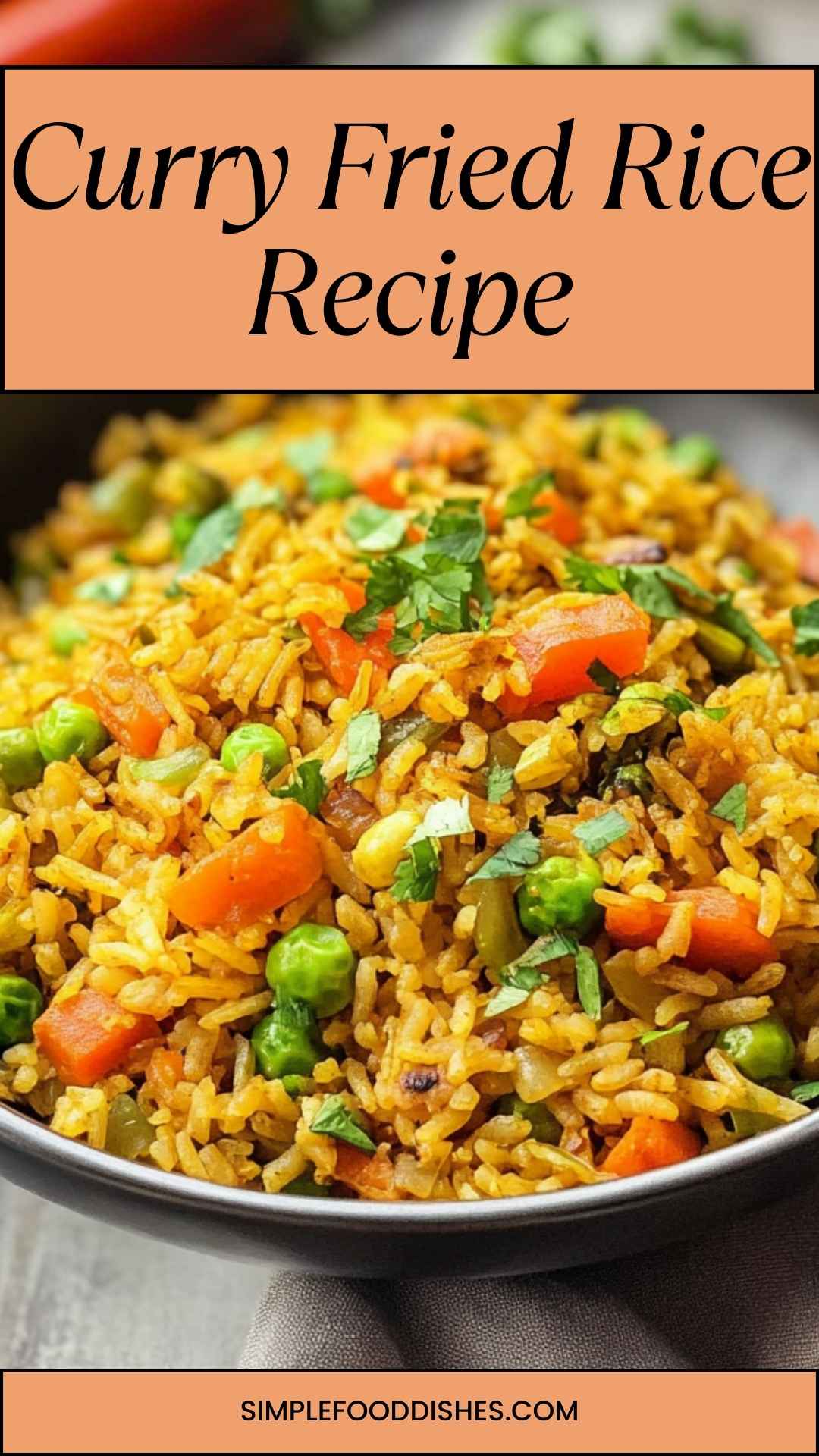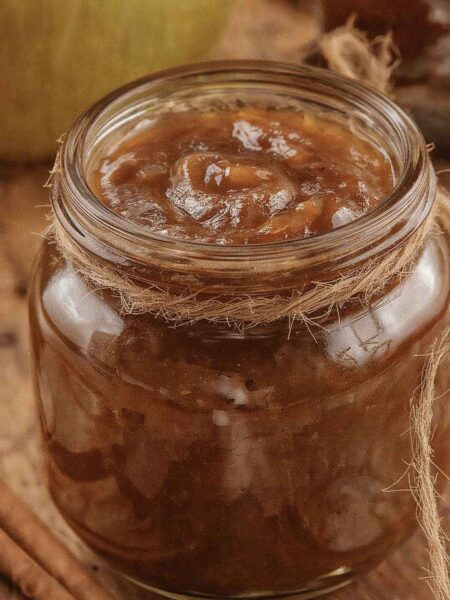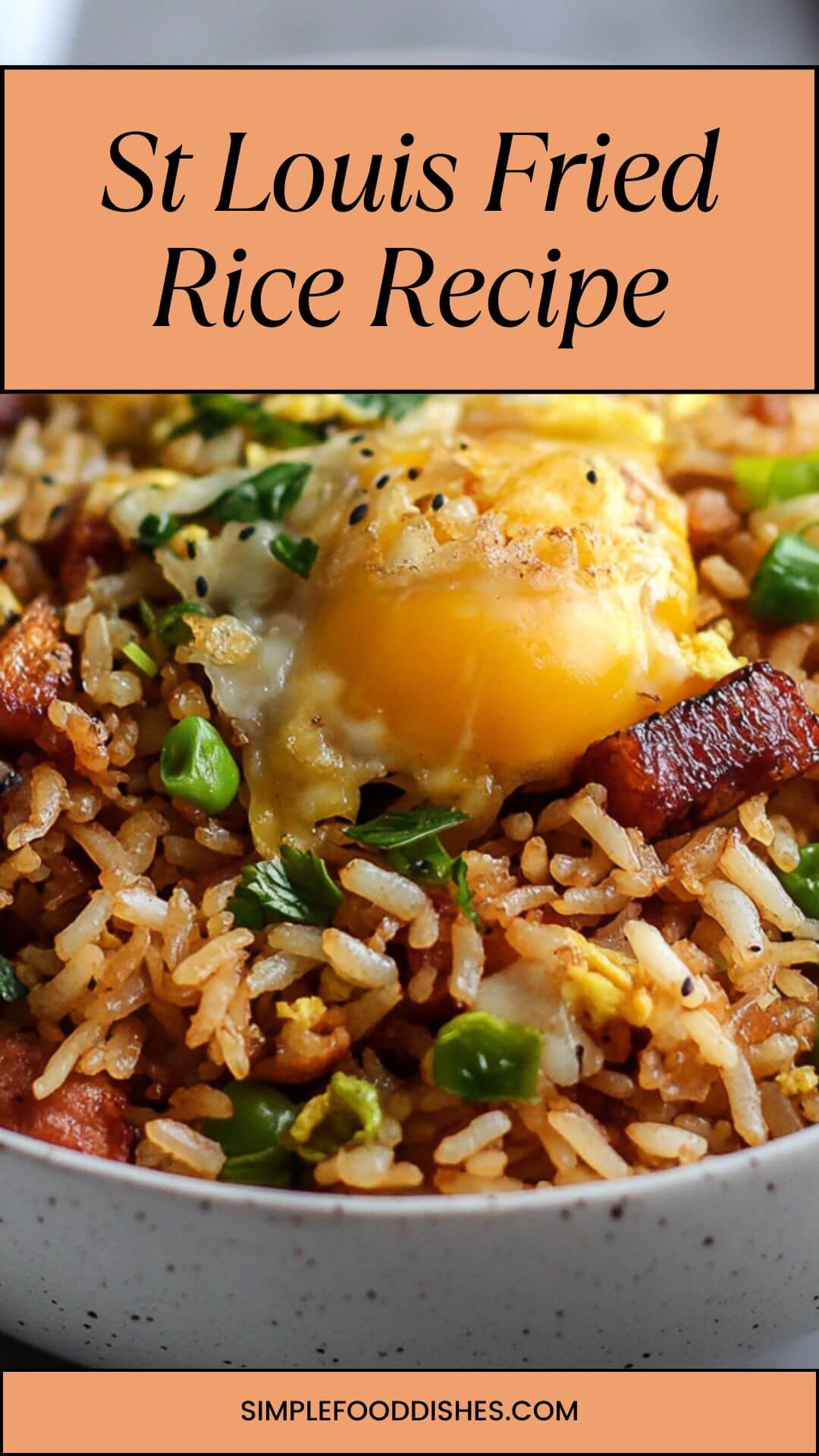When it comes to comfort food, there’s a certain charm in dishes that bring families together. For me, nothing does that better than a hearty bread stuffing. This dish, often paired with roast turkey, enhances holiday gatherings and Sunday dinners alike. If you’ve never ventured into the world of homemade stuffing, you’re in for a treat.
Imagine sinking your fork into a warm, flavorful blend, with each bite reminiscent of cozy family get-togethers. Before diving into the ins and outs of my beloved bread stuffing recipe, let’s talk about what to pair it with and why this recipe is worth your time.
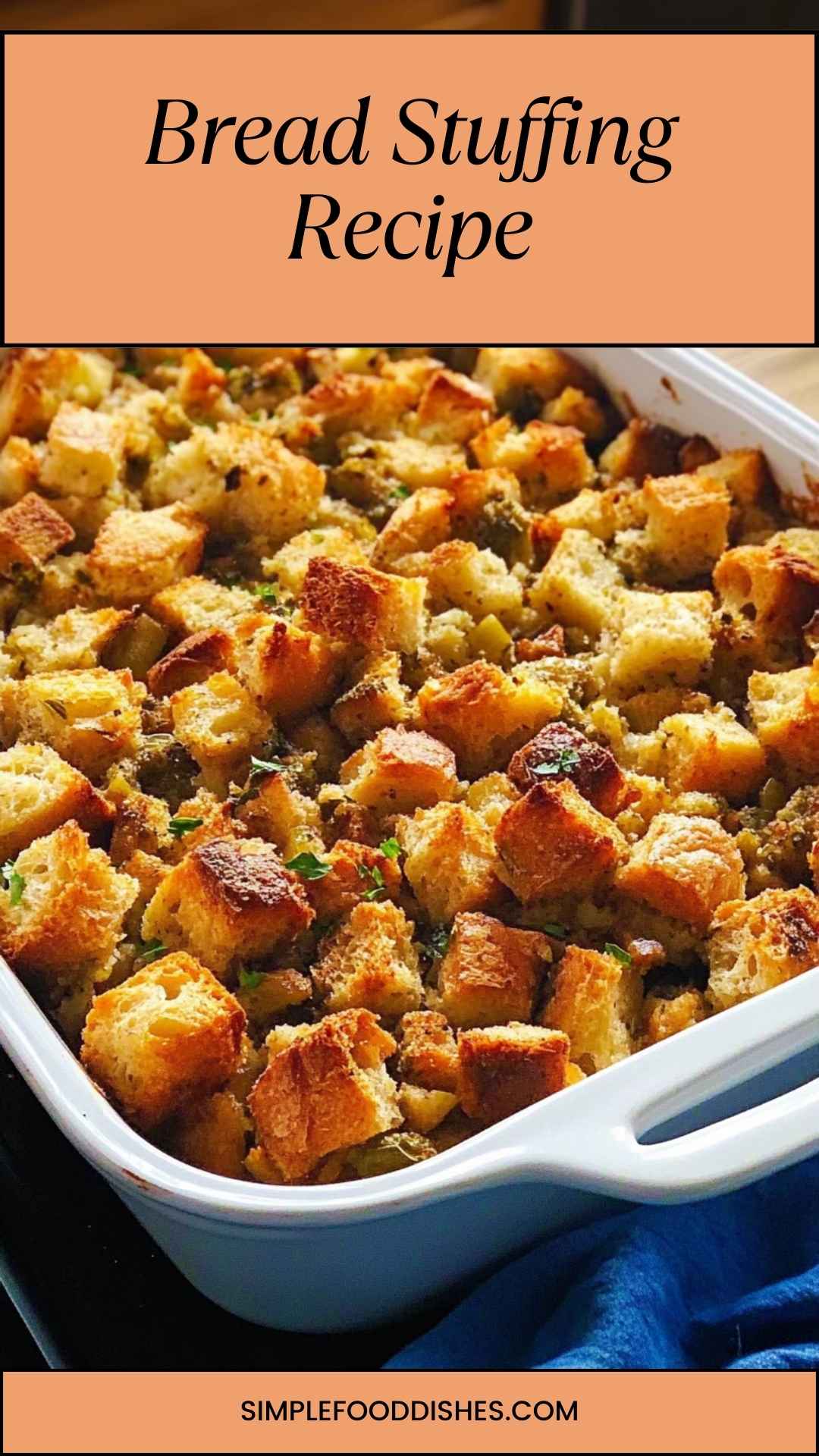
Perfect Pairings for Bread Stuffing
Before we get into the stuffing specifics, let’s explore what goes beautifully alongside this dish.
- Roast Turkey: There’s no denying that stuffing is the perfect partner for roast turkey. The juicy bird complements the savory, herb-filled stuffing wonderfully.
- Honey Glazed Ham: For those who prefer pork, honey glazed ham offers a sweet contrast to the salty stuffing.
- Roasted Vegetables: A mix of seasonal veggies roasted with olive oil brings out their natural sweetness and provides a colorful, healthy balance to the meal.
These combinations create a meal you won’t forget. Now, let’s dive into the wonderful world of bread stuffing.
Why This Recipe Works
Let’s break down the key features that make this bread stuffing a go-to recipe.
1. Simple Ingredients Make a Big Impact:
You don’t need a treasure chest of ingredients to create magical bread stuffing. The foundational elements include soft bread cubes, butter, and aromatics like onion and celery. This simplicity allows for the flavors to shine without overwhelming your palate.
2. Perfect Texture:
The texture of this stuffing strikes a delightful balance. The soft bread absorbs the flavors while staying fluffy inside. Crisp edges present an inviting crunch. It’s comfort food with the right amount of variety.
3. Versatile Flavors:
Toss in your favorite herbs or spices. The classic mix of sage, thyme, and parsley adds an aromatic flair. And if you’re feeling adventurous, consider adding in some chopped apples or nuts for a surprising twist.
4. Make-Ahead Friendly:
You can prepare your bread stuffing in advance. This feature is a real lifesaver during hectic holiday meals. Simply reheat it before serving, leaving you with more time to enjoy with family.
How Does It Taste Like?
Let’s talk about flavor. Picture this: you take the first bite, and your taste buds are met with a comforting embrace of warm herbs and buttery bread. The sage has a fragrant earthiness, while the black pepper adds a gentle kick.
Vegetables provide a subtle sweetness and crunch, transforming every mouthful into a flavorful experience that is both nostalgic and satisfying.
What Sets This Recipe Apart?
This bread stuffing is more than just what you might find in the aisles of a grocery store. While many recipes rely on prepackaged seasoning blends, mine focuses on fresh, whole ingredients.
The interplay of textures—from soft and chewy bread to crunchy vegetables—creates a delightful experience.
The Ingredients
Now, let’s dive into the list of ingredients you’ll need for this bread stuffing:
- 9 cups soft bread cubes
- 1 cup unsalted butter
- ½ cup diced carrots
- 1 ½ cups diced celery with leaves
- ¾ cup finely chopped onion
- 2 teaspoons sea salt
- 1 teaspoon crushed sage
- 1 teaspoon dried thyme
- 1 teaspoon poultry seasoning
- ½ teaspoon freshly ground black pepper
- ½ cup chopped fresh parsley
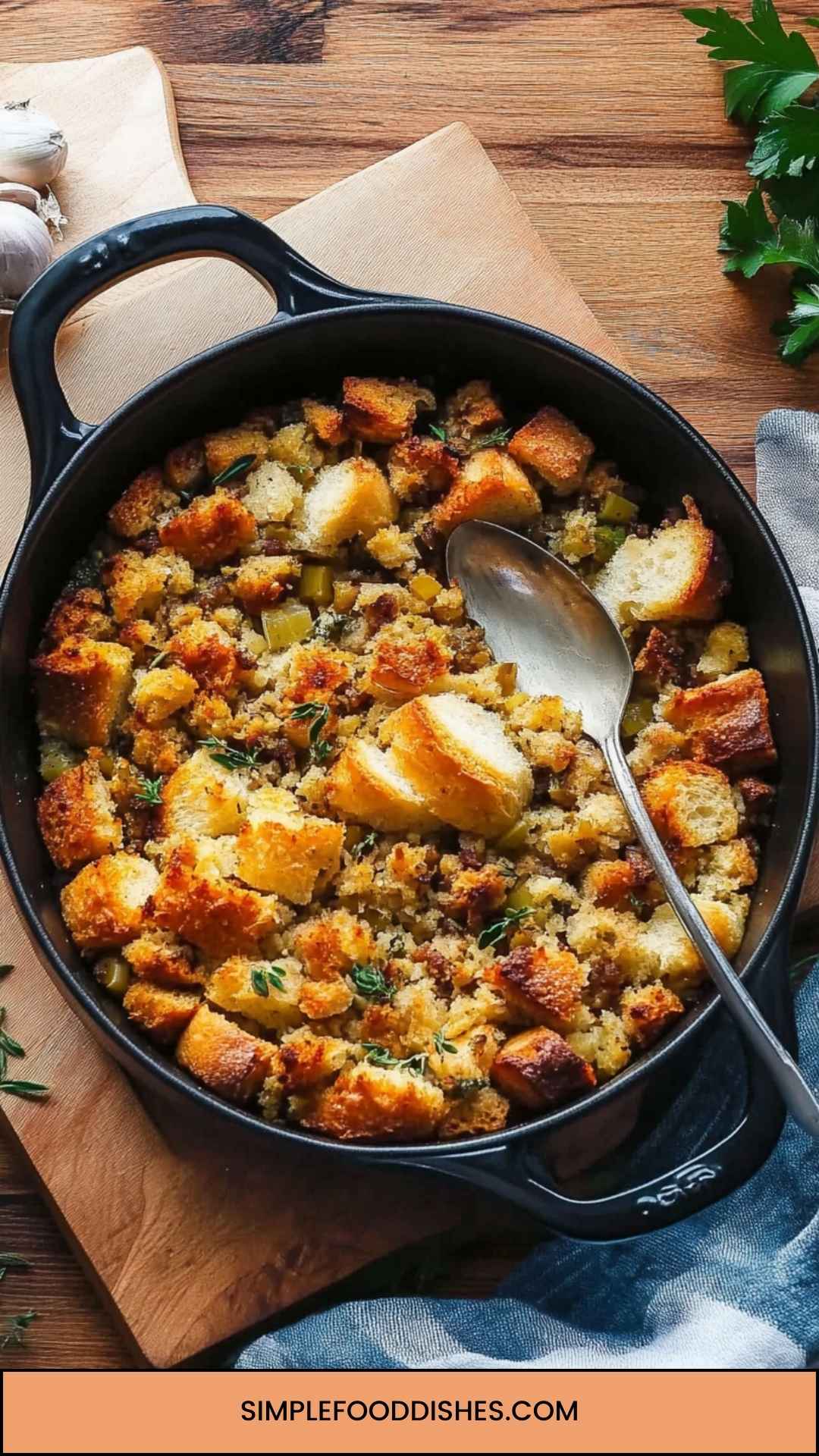
Instructions
Step 1: Prepare the Bread
Begin by cutting your bread into cubes if you haven’t done so already. Let it sit out, ideally for a few hours or overnight. Stale bread works best because it holds up against moisture.
Step 2: Sauté Your Vegetables
In a large skillet, melt the butter over medium heat. Once melted, add the diced onions, carrots, and celery. Cook for about 5-7 minutes, until the vegetables are softened and the onions are translucent. This creates a flavorful base.
Step 3: Mix the Ingredients
Transfer the vegetable mixture into a large bowl. Add your bread cubes to this mixture. Now sprinkle in the sage, thyme, poultry seasoning, salt, black pepper, and chopped parsley. Toss everything together gently to combine.
Step 4: Add Liquid
This step is crucial. Gradually pour in broth or stock. Start with a cup and add more if needed. You want the mixture to be moist but not soggy.
Step 5: Bake
Preheat your oven to 350°F (175°C). Transfer the stuffing into a greased baking dish. Cover it with foil and bake for about 30 minutes. Then remove the foil and bake for another 15-20 minutes until the top is golden brown.
Step 6: Serve
Once baked, let it sit for about 10 minutes before serving. This helps the flavors marry perfectly.
Notes
To elevate your bread stuffing experience, consider these tips:
- Use Day-Old Bread: Stale bread cubes absorb better, providing the ideal texture.
- Spice Adjustments: Feel free to adjust herbs according to your preference.
- Broth Variety: Chicken or vegetable broth can be substituted for different flavor profiles.
- Add-ins Galore: Dried cranberries, chopped nuts, or diced apples can enhance flavor.
- Crispy Topping: For a crunchier finish, broil for the last few minutes of baking.
How Do You Store This Bread Stuffing?
To keep leftovers fresh, allow the stuffing to cool completely. Transfer it into an airtight container and store it in the refrigerator. It will last for up to four days.
For longer storage, you can freeze it for up to three months. Just make sure to reheat thoroughly before serving.
Sides For Bread Stuffing
To round out the meal, consider these side options:
- Green Bean Almondine: This dish combines vibrant green beans sautéed with butter and fresh almonds, offering a crisp contrast to the stuffing.
- Garlic Mashed Potatoes: Creamy and rich, these potatoes pair perfectly with stuffing. The smooth texture is a comforting contrast.
- Cranberry Sauce: A touch of sweetness from homemade cranberry sauce brightens the meal. Its tart flavor balances the savory elements beautifully.
These sides bring color, texture, and taste to your dining table.
What Alternatives Can You Use for the Ingredients?
Sometimes, kitchens run low on supplies. Here’s what you can substitute if you find yourself missing ingredients:
- Butter: Use olive oil or coconut oil instead for a dairy-free option.
- Vegetables: If you lack celery, diced bell peppers or mushrooms work nicely without losing flavor.
- Herbs: If you’re out of dried thyme, oregano or marjoram can work as suitable alternatives.
- Broth: Water or vegetable stock can substitute for broth in a pinch, but you’ll lose some flavor.
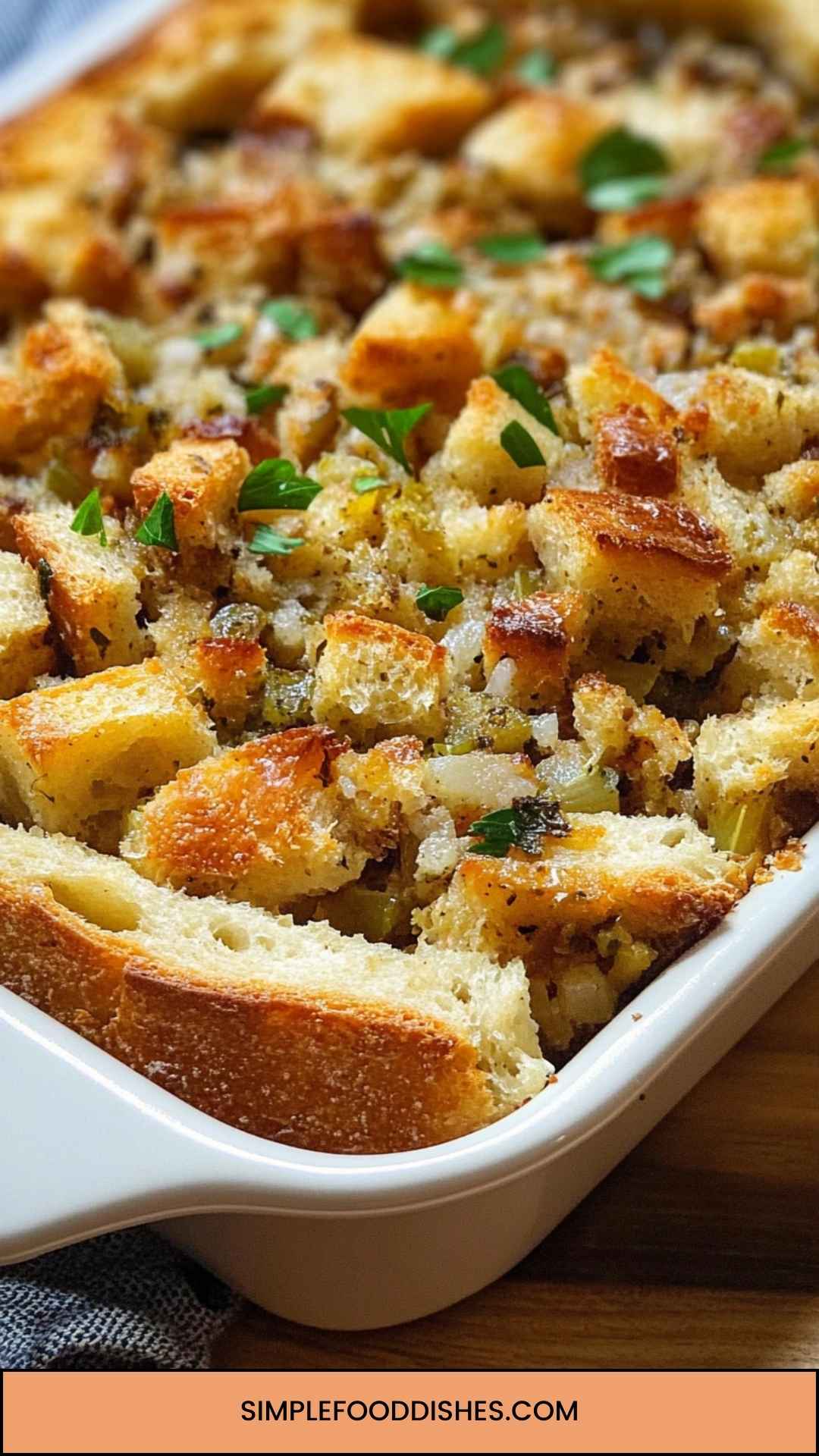
Conclusion
Bread stuffing is more than just a side dish; it’s a beloved tradition that enhances any meal. With its cozy flavors and comforting textures, it’s no wonder why I always find room on my plate for stuffing.
Whether you’re gathering around the holiday table or preparing a weeknight family dinner, this recipe serves as a delicious reminder of the importance of home-cooked meals.
So dust off that baking dish, gather your ingredients, and share the joy of homemade bread stuffing with your loved ones.
After all, it’s the simple pleasures in life that leave a lasting impact. Happy cooking!
You’ll also like the following recipes!
- Chicken And Dumplings Copycat Recipe
- How to Make Homemade Potato And Cheese Pierogi
- Best Cream Cheese Stuffed Bacon Wrapped Jalapenos
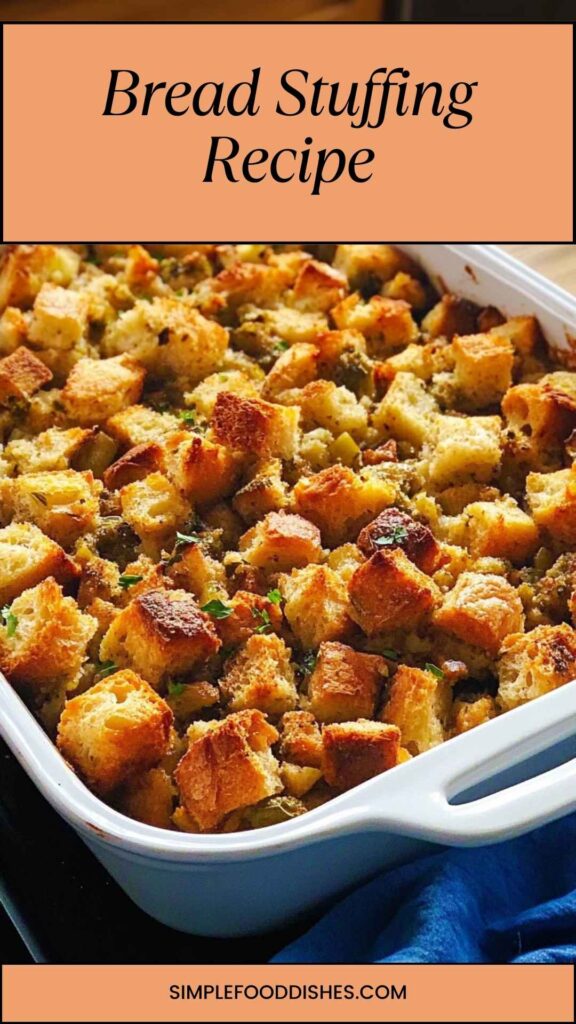
Bread Stuffing Recipe – Simple Food Dishes
Description
I’ll let you in on a secret: making the perfect bread stuffing isn’t just a culinary task; it’s a tradition. There’s something magical about the aroma of bread, herbs, and vegetables mingling together in the kitchen. But what truly makes this recipe stand out?
Let’s explore the “why” behind it.
Ingredients
Instructions
Step 1: Prepare the Bread
-
Begin by cutting your bread into cubes if you haven’t done so already. Let it sit out, ideally for a few hours or overnight. Stale bread works best because it holds up against moisture.
Step 2: Sauté Your Vegetables
-
In a large skillet, melt the butter over medium heat. Once melted, add the diced onions, carrots, and celery. Cook for about 5-7 minutes, until the vegetables are softened and the onions are translucent. This creates a flavorful base.
Step 3: Mix the Ingredients
-
Transfer the vegetable mixture into a large bowl. Add your bread cubes to this mixture. Now sprinkle in the sage, thyme, poultry seasoning, salt, black pepper, and chopped parsley. Toss everything together gently to combine.
Step 4: Add Liquid
-
This step is crucial. Gradually pour in broth or stock. Start with a cup and add more if needed. You want the mixture to be moist but not soggy.
Step 5: Bake
-
Preheat your oven to 350°F (175°C). Transfer the stuffing into a greased baking dish. Cover it with foil and bake for about 30 minutes. Then remove the foil and bake for another 15-20 minutes until the top is golden brown.
Step 6: Serve
-
Once baked, let it sit for about 10 minutes before serving. This helps the flavors marry perfectly.
Nutrition Facts
Servings 16
- Amount Per Serving
- Calories 128kcal
- % Daily Value *
- Total Fat 76g117%
- Cholesterol 15mg5%
- Sodium 403mg17%
- Total Carbohydrate 11g4%
- Dietary Fiber 1g4%
- Sugars 2g
- Protein 2g4%
* Percent Daily Values are based on a 2,000 calorie diet. Your daily value may be higher or lower depending on your calorie needs.
Note
- Use Day-Old Bread: Stale bread cubes absorb better, providing the ideal texture.
- Spice Adjustments: Feel free to adjust herbs according to your preference.
- Broth Variety: Chicken or vegetable broth can be substituted for different flavor profiles.
- Add-ins Galore: Dried cranberries, chopped nuts, or diced apples can enhance flavor.
- Crispy Topping: For a crunchier finish, broil for the last few minutes of baking.



